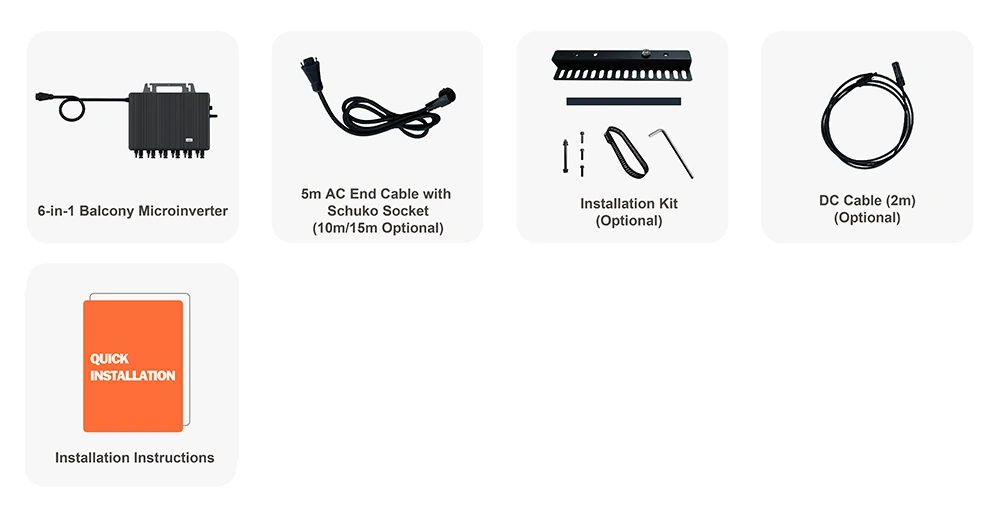Navigating the landscape of solar energy solutions can be daunting, especially when weighing the options available in solar microinverters. This pivotal component of solar power systems has a substantial influence on both the efficiency and economics of solar panel installations. In recent years, solar microinverters have gained popularity for their ability to optimize the performance of solar panels by converting direct current (DC) generated by solar panels into alternating current (AC) at the panel level. This technology provides an attractive alternative to traditional string inverters by offering numerous advantages, including enhanced energy harvest, improved system reliability, simplified design and troubleshooting, increased safety, and, importantly, greater flexibility in system design.

In understanding the market dynamics around solar microinverter prices, it is essential to delve into both the technological advancements that have influenced these costs and the factors currently shaping the market. The rapid technological breakthroughs in power electronics have allowed microinverter manufacturers to engineer solutions that are not only more efficient but also increasingly cost-effective. Over the past decade,
the prices of solar microinverters have witnessed a significant downward trend. This decline in costs can be attributed to economies of scale achieved through mass production and innovation-driven cost reductions in semiconductor components.
For potential solar adopters weighing the benefits of integrating microinverters into their systems, it's crucial to appreciate how pricing interplays with the longevity and return on investment (ROI) of these devices. Microinverters, due to their modular nature, eliminate the issue of a single point of failure found in traditional systems. Each panel operates independently, meaning if one panel is shaded or malfunctioning, it does not affect the overall energy production of the array. This capability not only enhances the energy yield of the installation but also extends the life of the solar system by evenly distributing and reducing operational stress.

From an expertise and authority perspective in the realm of renewable energy finance, it’s vital to consider the total cost of ownership when evaluating solar microinverters. While the initial cost of microinverters may be somewhat higher than conventional alternatives, the long-term benefits, including less maintenance, higher energy yield, and comprehensive warranty options make them appealing to both residential and commercial solar projects. Brands such as Enphase Energy have been at the forefront, offering competitive pricing accompanied by robust warranties that often surpass those of string inverter solutions. With warranties extending up to 25 years, solar microinverters promise not only performance reliability but also a solid investment in the sustainable energy field.
solar microinverter price
The solar microinverter market is not immune to global economic trends, with pricing subject to factors such as supply chain disruptions, fluctuations in raw material costs, and government policies promoting renewable energy adoption. As nations continue to push toward a low-carbon future, incentives such as tax breaks, rebates, and subsidies play a significant role in the affordability and proliferation of solar technology. Policymakers worldwide are increasingly recognizing the value proposition of microinverters and implementing supportive measures that drive down effective costs for end-users.
One of the most compelling experiences a consumer can have is the real-world performance feedback from existing installations. Customers consistently report positive outcomes in terms of energy efficiency and system uptime due to microinverter integration. This feedback loop, emphasizing trustworthiness, allows potential buyers to make informed decisions based on peer experiences. In the solar industry, testimonies on reliability and performance from other users serve as a powerful tool in demystifying perceived complexity and proving the tangible benefits they contribute to energy savings and environmental impact.
In conclusion, the future of solar microinverter pricing looks promising with technological advancements continuing to make these products more accessible and efficient. As the solar industry evolves, it is reasonable to anticipate further reduction in costs coupled with enhancements in performance and reliability. The ecosystem surrounding microinverters is expected to flourish as innovation, policy support, and consumer trust converge. For anyone considering solar power, engaging with these advancements provides a roadmap not only toward energy independence but also contributes significantly to global sustainability efforts. The careful consideration of pricing in conjunction with performance metrics ensures an informed decision, aligning financial sensibility with pioneering energy solutions.
 LEARN DETAILS
LEARN DETAILS



